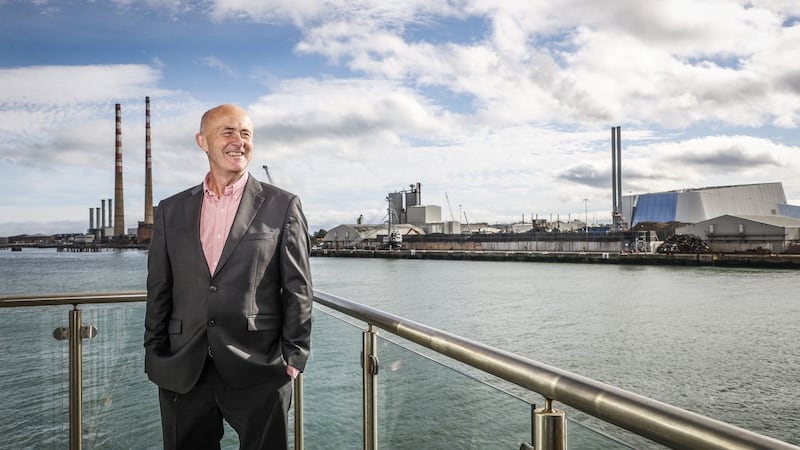Dublin Port Company has announced plans for a €400 million project to redevelop the south side of the State's busiest port that will include building a bridge across the river Liffey.
The project is the third and final part of the port’s 2040 masterplan development to increase capacity to more than three million freight units annually.
Construction will begin on the concluding part of the masterplan, now referred to as the “3FM Project” in 2026, on the Poolbeg peninsula where a fifth of the port’s land is located.

The project, at the pre-planning stage with a planning application being prepared for submission to An Bord Pleanála in early 2023, will cover 20 per cent of the port's 2040 targeted capacity.
The project will comprise a new load-on, load-off terminal – the largest container terminal in the country – in front of the ESB’s Poolbeg Power Station with capacity for 360,000 containers every year, and a new roll-on, roll-off lorry freight terminal for 288,000 freight trailers a year.
One million container and trailer units are handled by the port every year. It plans to increase this to 3.1 million by 2040 with 648,000 units being handled on the south side of the port.
The new development will include the construction of a new private road called the Southern Port Access Route (Spar) to link the north and south parts of the port with a new bridge across the Liffey east of Tom Clarke Bridge, better known as the East-Link Toll Bridge.
A new 325m diameter ship-turning circle in front of Pigeon House Harbour will be built in the development of the southern port.
What does the port company chief say?
The port company is hoping to complete the work between 2030 and 2035.
Port company chief executive Eamonn O’Reillysaid developing the south side of the facility is critical to building capacity for the expected long-term increase in freight traffic.
“If we don’t get this project done, then Dublin Port will probably max out by around 2030. There are no other projects in the pipeline anywhere that will provide the capacity,” he said.
Mr O’Reilly said that the phased development work would take time with the project initially expected to take four years from concept stage to securing planning permission.
“We need flexibility. It is not a project that you would do in one big contract. You break it up into smaller bits. That takes an awful lot of time,” he said
The plans include three new parks covering 15 acres on the Poolbeg peninsula facing on to Liffey and Sandymount Strand and 10km of cycle and pedestrian routes.
“It goes back to reintegrating the port into the city. We don’t think that great big infrastructure needs to be like Chernobyl that nobody can go next or near. On the contrary, we think we can bring people down towards it,” said Mr O’Reilly.
Dublin Port, a critical infrastructure for Irish trade, accounted for 84 per cent of all unitised trade into Irish ports last year.
















